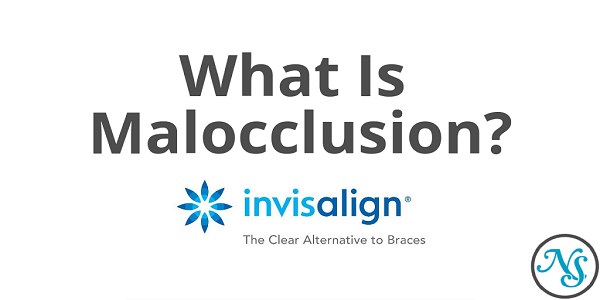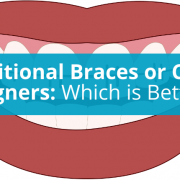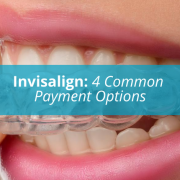Will Invisalign Correct Malocclusion?
Malocclusion Means Your Bite Is Out of Balance
Malocclusion simply means misaligned teeth. Clinically, it means the abnormal alignment of the upper and lower teeth.
The word malocclusion literally means “bad bite” – according to the medical dictionary, it’s a problem with the way your upper and lower teeth fit together when biting or chewing.
Whether that’s crooked teeth, an overbite or underbite, only your dentist – and perhaps orthodontist – can diagnose & treat malocclusion.
Malocclusion can occur from facial trauma, crowding, bad-habits (like thumb-sucking), or when your teeth are larger than your jaw.
When it does happen, correcting malocclusion is important for not only your dental health but your overall health too.
Let’s take a look at the most common forms of malocclusion…
After all, straight teeth are healthy teeth!
The Different Types of Malocclusion
Overbite
Most of you all probably know what an overbite is, as it’s often referred to as “buck-teeth.”
An overbite is a condition where your upper teeth extend further beyond your lower teeth, typically this is only between three and five millimeters.
Maybe some of you know first-hand about this common type of malocclusion, which was a major reason for your braces in childhood.
Aesthetic appearances aside, an overbite can make your jaw work harder when you bite and chew food, and that can lead to jaw pain.
Crossbite
A “crossbite” is a form of malocclusion referring to the lateral misalignment of your dental arches.
Aside from an overbite – or underbite – your teeth can also develop at poor angles, leading to crooked teeth or a crooked bite.
This crossbite effect puts a strain on your bite and places you at an increased risk of developing dental diseases.
Underbite
The opposite of an overbite is what?
Yup, you probably knew this common form or malocclusion too. An underbite is when your lower teeth extend in front of your upper teeth.
The reason why this is bad – beyond looks, again – is because your upper teeth should naturally rest in front of your lower teeth.
This imbalance can strain your jaw, often times even more so than an overbite.
Are There Symptoms of Malocclusion?
Yes, malocclusion is quite common, and it affects patients of all ages.
The three most common symptoms related to malocclusion are as follows – courtesy of The Mayo Clinic:
- Misaligned teeth
- Discomfort or difficulty eating & chewing
- Jaw pain
If you notice any of those symptoms, ask us about malocclusion, and what specifically is bothering you. We’ll be happy to discuss all treatment options available.
How Is Malocclusion Treated?
Malocclusion is treated by your dentist or orthodontist, and it can be treated a variety of ways, depending on what is specifically causing the issue.
Treatments include:
- Invisalign clear aligners
- Traditional metal braces
- Repair and or reshaping of irregular teeth
- Prosthodontic devices
- Orthognathic surgery
- Maxillomandibular advancement
Malocclusion can only be treated by your dentist, an orthodontist, or in some cases, a oral & maxillofacial surgeon.
It can have a significant impact on your dental health – and overall health, and malocclusion can develop at any age.
To find out if you need orthodontic treatment to correct it, or if you’ve been considering Invisalign to straighten crooked teeth, call us to schedule a consultation.
If you’re concerned about correcting your overbite, underbite, or crooked teeth, have no fear – Invisalign is here!
And if your case of malocclusion makes you a poor candidate for Invisalign, we’ll refer you to a local specialist for treatment.
Just DON’T go the DIY route with straightening your teeth!
Frisco TX Invisalign Dentist: Manjula Alapati, D.D.S.
Take advantage of our Invisalign smile special!
Dr. Alapati is offering new patients significant savings here in Frisco and the surrounding Denton & Collin County areas.
Call Us Today at (469) 458-2035 to Schedule Your Invisalign Consultation!
- SAVE $500 on Invisalign at our Frisco dental office! – http://bit.ly/FriscoDentalDiscounts
Call Us Today at (469) 458-2035 to Schedule Your Appointment!
Editor’s Note: This post was originally published on the dental health blog of Dr. Joseph Haddad and has been republished here with permission. It has since been updated for accuracy & comprehensiveness.












